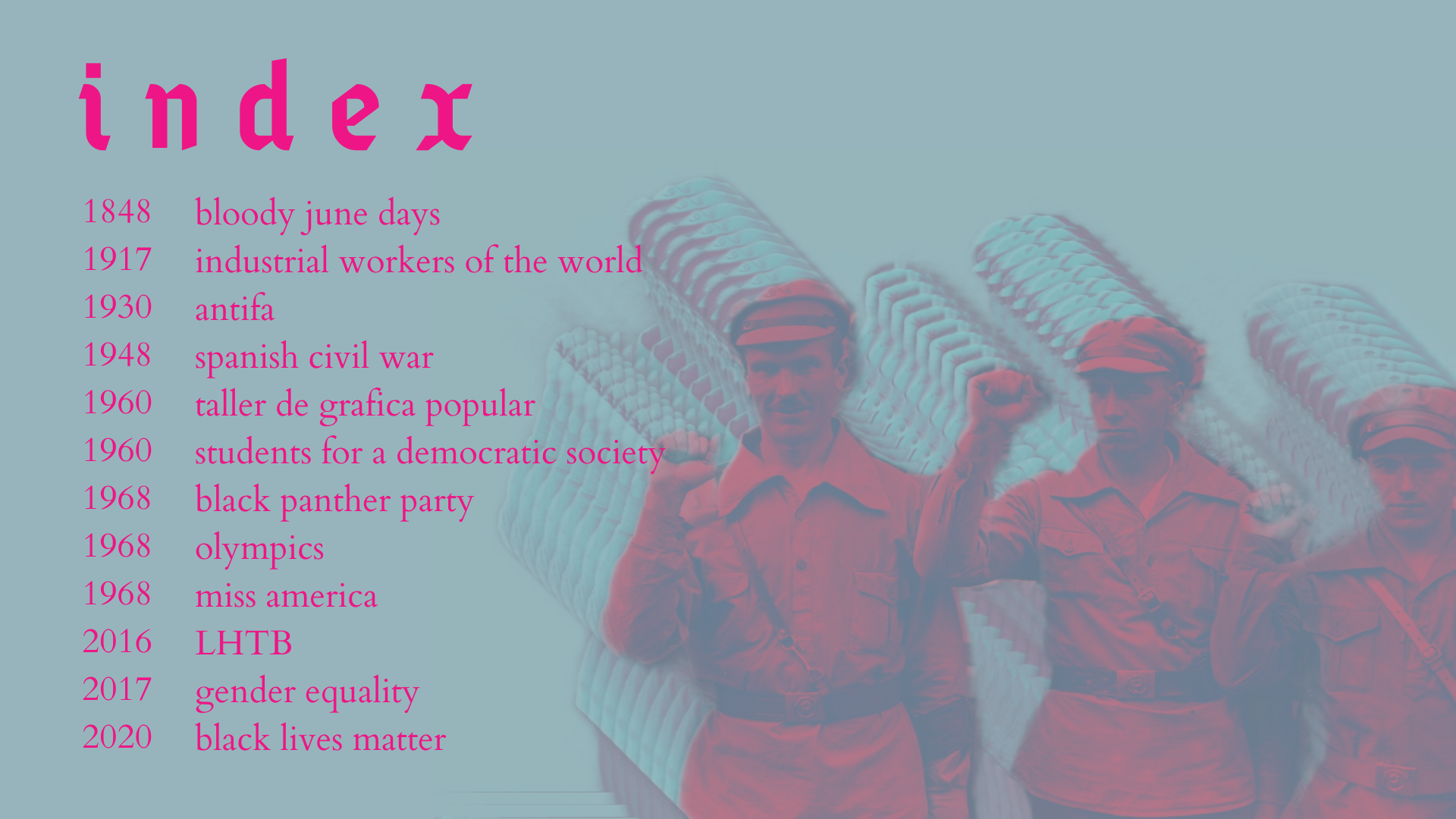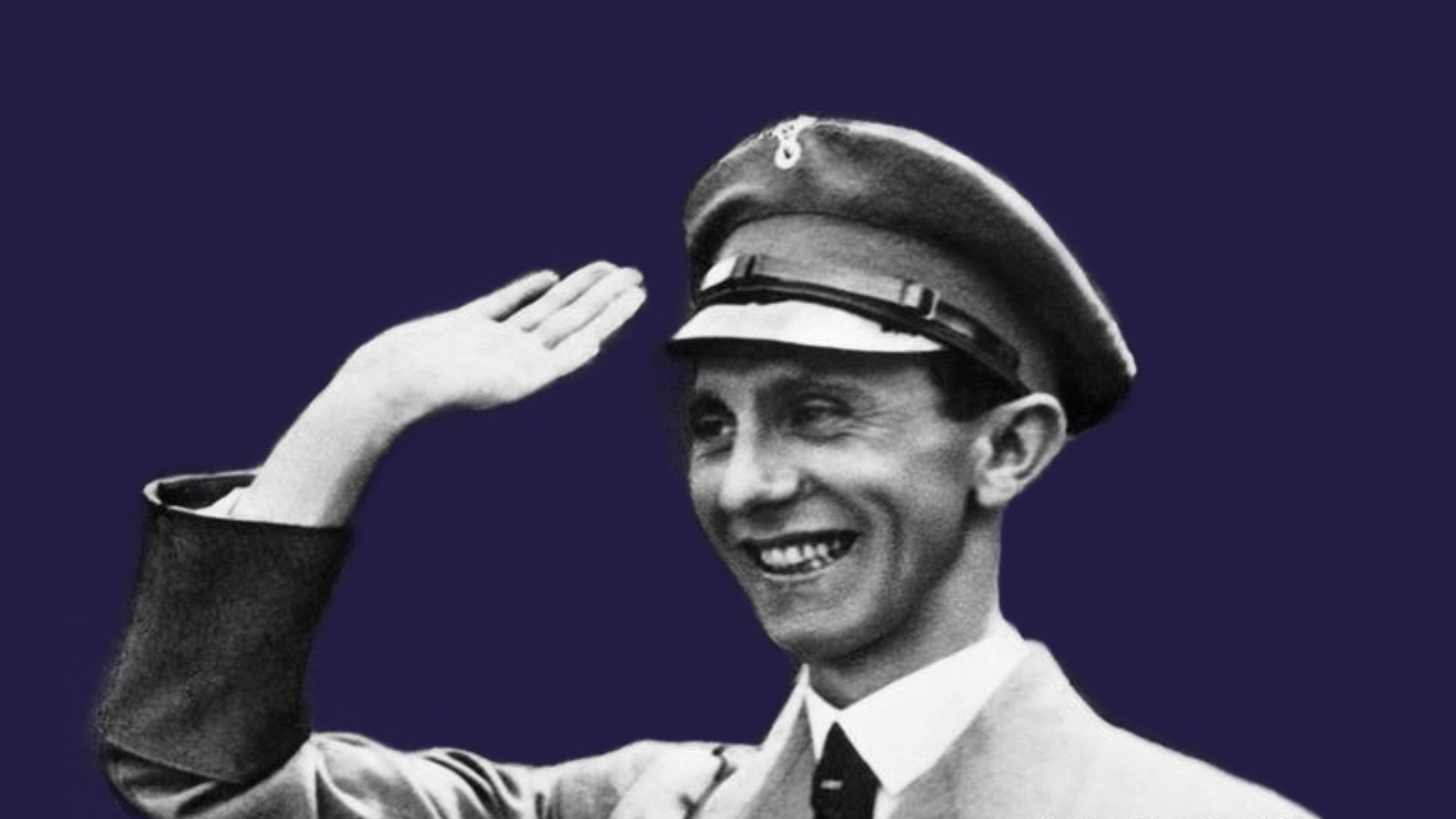index
introduction of the power fist
meaning
history of the raised fist
evolution
context
contamination
alternative gestures
dérive
The raised fist. The clenched fist. Power fist. So many meanings, so many appearances. In 2020 we saw the Black Lives Matter movement using the fist often, representing Black Power. But the symbol is recognizable in many instances, think for example of communism, with the hammer and sickle. The symbol combined with Venus represents feminism. So who's is it then?, you might be thinking. There is a long line to trace back, all starting in the French Revolution in 1848. Every movement that has used the fist can be seen as oppressed groups, groups who are fighting for change or equality. Together we stand united, it says.
The raised fist is all throughout history used in a plethora of different ways. It is an image of mixed meaning. National Geographic calls it the "global symbol of fighting oppression", and that can indeed be seen as the underlying similarity.
"We shall overcome." That's for Helliger from RD the meaning of the fist.
Haywood, a founding member of the union Industrial Workers of the World, preached working-class solidarity across all races and trades. “Every finger by itself has no force,” he said, lifting his sizable hand to the crowd. “Now look,” he said, closing his fingers into a fist. “See that, that’s the IWW.”
Huda Ahmed, a young black girl, has been raising her own fist during Black Lives Matter protests. She does it, she says, because the gesture “signifies resiliency and power through every triumph and struggle.” (Stout, 2020)
The raised fist simultaneously represents enclosure via the fist configuration and increasing exclamation via de upward movement. It contains two signifying gestural components: the configuration and the movement. Each of them supoorts an analogical link. Each one is a gestural sign.
We know that the fist can represent strength, physical or psychological. As for movement forwards, it is eminently ambiguous. As a rule, one advances towards something or against an opposing force. The progression represented along this axis is both temporal and spatial. Consequently, the different combinations of notions that these gestural components can evoke are themselves multiple. The notions of "will", on the one hand, and "progression" on the other, combine to represent "the will to advance"(1). The notions of "effort" and "progression towards a goal" become allied to represent the effort required to reach a goal (2). The combination of the notions "strength" and "temporal progression" results in the idea of "strength and modernism" (3). Finally, the representation of "strength" allied with a "progression against an opposing force" amounts the "strength to attack" (4). Different combinations of the notions that a gesture has the potential to express can result in it expressing a diverse range of contextual meanings.
- Geneviève Calbris, Elements of meaning in gesture
Geneviève Calbris, Elements of meaning in gesture
Geneviève Calbris, Elements of meaning in gesture
The very fist instance (as we know it) of the raised fist was in the 19th century, when European civilians stood up against monarchies. At that time the raised fist united working class people as they fought for equality: it resulted in the abdication of the last reigning king Louis-Philippe, universal manhood suffrage and the Second Republic.
Nowadays the Black Power Movement has reclaimed the raised fist to fight against systemic racism. Reclaimed, because the Black Panther Party in the 1960s had adopted the fist as its logo, representing Black Power.
The clenched fist has not only been used for nobel causes. White supremacist claim the fist to represent "White Power". Lee Harvey Oswald clenched and raised his fist to salute photographers after he was arrested for assassinating President John F. Kennedy in 1963, and in 2011, far-right terrorist Anders Behring Breivik raised his clenched fist at the start of the second day of his trial for killing 77 people in gun and bomb attacks in Norway. (Helligar, 2020)
Since the death of George Floyd, the power fist has appeared everywhere in the Black Lives Matter movement. It has never been gone, but rises to the surface again.




























The new gesture of the raising fist, is when you are on the protest field, you stand next to each other and you put your hands against the person next to you. It means that you are not alone and you fight this oppression together.
The poster refers to how to use the gesture and when to use it. So the silhouettes show how to use the gesture and the text on the poster shows it is on a black lives matter protest.
We present this with a poster, because of this format and because it is made digital you can show it off and online. So you can make an Instagram page and show the poster on the page. But you can also print the poster and place them on train stations and besides the road. When people see the poster they see the protest and how to use the gesture.
The reason we made a poster is because our audience is around 18 year and older, and the most people who fight for human rights/ black lives matter are around the age of 18 till 35. These people are using social media everyday and, using the public transport the most. So these locations are perfect for the audience.
By Birte




Alternative gestures
When looking for alternative gestures, our first thought was a similar gesture such as how you place the fist and what sides of the fist you could see or the combination of mustiple hands that make up one fist. This specific gestures links to our poster very well and could potentally create a different version of it in the future. These hand gestures signify strength (right picture) and an agreement between the two people (left picutre)
Another alternative we wanted to have is called to take the knee. It started at an American Football game, in which quarterback Colin Kaepernick sat on the bench and then knelt during the US national anthem. This gesture was then used for althetes to protests agaisnt racism and to show solidarity with those victims and to put an end to the police brutalitty that they face in their daily lifes.
The take the knee gesture was widely used after George Floyd's death as it was their awakening call and when the Black Lives Matter movement was generated. However, this gesture was also used by Martin Luther King in Marchof 1965 and an image of it has been recently used and spread thorugh the BLM movement.
These 3 alternative gestures benefit and contibute to the Black Lives Matter movement as they are all contributing and engaging people with the movement. They all show solidarity to the cause (BLM) more specifically than the raised fist, as this was and still is used in other movements.
The poster would be shown around the city but mainly on social media, as with thte current situation people spend more time on thier phones than outside dure to the regilations, so we thought it would be more appropiate to display it on social media, as it's also a much faster medium to spread the message through. We shared the final design of the poster with the audience and recieved their feed. The questions we asked them were;
What does the poster transmit to them?
What do they like or not like about the poster?
What would they change to make it more appealing to the audience?
From these questions we got a few answers and some of them overlaped eachother and meant the same. Some answers we got were,
- I like the colors and design
-The writting is kind of off putting, frustrating to read
-Personally BLM feels important and the writing doesn't feel like as important
-The people at the bottom make it seem like an army which is a good thing but it could be interpreted in another way aswell
-The fists in the background could be outlined and made more abstract so that they are more visible, as right now they are hard to see and are missed
-I like the people at the bottom as 'standing and supporting one another' but maybe if they had a different posture
The conclusion that we drew from the feedback from the audience is to change the writing as it could diminish the meaning and strength of the poster. We got really good feedback for the color choice and the design but there could be some changes made, one of the reviewers said to extend the arms all the way up or all the way down, instead of having them half extended. This way the arms are still linked and the joined hands could make a bigger fist, as shown in one of the derivatives. For the writing we got a suggestion of making it really bold and eye catching and maybe having the upper phrase a little smaller.
https://books.google.nl/books?id=hat4PMRx7lUC&q=raised+fist&pg=PA28&redir_esc=y#v=snippet&q=raised%20fist&f=false
https://www.nationalgeographic.com/history/article/history-of-raised-fist-global-symbol-fighting-oppression
https://www.rd.com/article/history-behind-the-clenched-first-and-the-symbol-for-black-power/
https://www.shutterstock.com/es/search/gesture+solidarity
https://www.bbc.com/news/explainers-53098516
